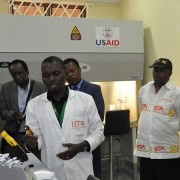Speeches Shim

On Tuesday, May 21, 2019, Malawians went to the polls to participate in their tripartite elections for president, parliamentarians, and district representatives. Across Malawi, 5,105,983 citizens cast their vote and participated in Malawi’s sixth national election since the end of Hastings Kamuzu Banda’s 30 years of post-colonial rule. On Monday, May 27, 2019, the Malawi Electoral Commission (MEC) declared the incumbent Arthur P. Mutharika of the Democratic Progressive Party (DPP) the winner with 38.57 percent of the vote.

It is a question that needs to be asked while reasonable solutions are still within reach. Between 2004 and 2017, Malawi lost an estimated 1.7 percent of its forest cover every year, and according to Zacharia Magombo, Principal Scientific Officer at the National Herbarium and Botanic Gardens of Malawi, the demand for fuel wood will exceed the number of trees that can be regenerated in the country’s forests, farms and tree plantations within the next five years. As more and more trees are cut down to meet fuel and construction needs, deforestation is leading to increased soil erosion, more flood and drought events, and reduced crop productivity. Using firewood and charcoal for cooking fuel is the number one driver of deforestation, as 90 percent of Malawians do not have electrical power or other sources of energy with which to cook.

USAID's Office of Foreign Disaster Assistance (OFDA) has released an additional $550,000 (MK 400 million) to support ongoing flood relief efforts in some of the most heavily impacted districts in the south. USAID implementing partners CARE and CRS will use these funds to support farmers who lost crops during the floods by procuring maize seeds and sweet potato vines, which will then be distributed at seed fairs. During these seed fairs, farmers can share information with one another and also pursue basic agricultural technical assistance.

In many ways, Malawi’s future is a race against time. With a current fertility rate of 4.4 children per woman, Malawi’s population of 17.5 million will double to 35 million by 2040, if fertility remains steady. If this comes to pass, it is difficult to imagine how the Government of Malawi (GoM) can achieve its education, health, and economic development goals. There will simply be too many citizens for Malawi’s growing systems to absorb. If the fertility rate remains at 4.4 children per woman, for example, the resulting population growth would mean that in 2050, Malawi will need 6,936 more schools than if the fertility rate were 2.3 children per woman.

Fish stocks in Malawi’s lakes are under enormous pressure, primarily from overfishing. To combat this, the USAID FISH project is empowering local Beach Village Committees to develop and run fish sanctuaries in coordination with Malawi’s Department of Fisheries. Twenty months after this effort began, a fish-stock survey demonstrates that the average number of species present increased from 8.2 to 13.5 (a jump of 65%) in surveyed regions, while the diversity index increased by 23% in all lakes

Comment
Make a general inquiry or suggest an improvement.